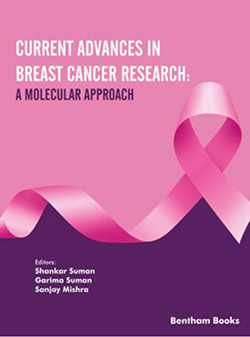Abstract
Breast cancer in women is the most frequent cancer with the highest mortality worldwide. The risk factor includes aging, family history, genetic predisposition, and hormone factor. In recent years, many new gene signatures have been identified, which have a profound effect on breast cancer initiation and progression. Extensive research has been done in the past five decades in understanding breast cancer biology through genomics and proteomics. All these comprehensive studies from breast cancer patients elucidate heterogeneity of disease as one of the complex problems in its treatment and management. The outburst of molecular information has led to an understanding of the biological diversity of breast cancer. The involvement of various genes at different steps of cancer progression, such as proliferation, evading apoptosis, migration, immunosuppression, and chemoresistance, have been described in this chapter. With the advent of miRNA and splicing factors, new differential regulators of genes have been identified in breast cancer. The breast cancer therapeutic approach can be accomplished by identifying the oncogene and tumor suppressor genes at an early stage of the disease. Elucidation of novel genes in breast cancer will lead to identifying new molecular pathways that may be targeted for its treatment. For the prognostic and diagnostic treatment of breast cancer it is very important to identify newer genomic fingerprints and to develop novel therapeutic targets against them. Our main goal is to make available inclusive understanding of molecular mechanisms and hallmarks of breast carcinogenesis.
Keywords: BRAC1, Breast Cancer, Chemoresistance, HER2, Metallo-estrogens, mi-RNA, miRNA, Molecular Fingerprinting, TNBC, TME, Treg, Trastuzumab.






















